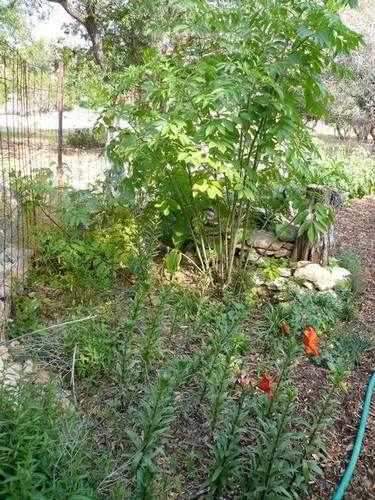
 1
1








Idle dreamer
 1
1




jesse markowitz wrote:The author will walk you through what the grower wanted to do, the property's issues that the grower had to accommodate for, how things progressed, and what the author thinks can be improved within the system.
Muddling towards a more permanent agriculture. Not after a guru or a religion, just a functional garden.
 1
1




Certifiable food forest gardener, free gardening advice offered and accepted. Permaculture is the intersection of environmentalsim and agriculture.
 2
2






Idle dreamer




That would be a lot more compelling (to me) if the author's proposed improvements had actually been tried, and results reported.
I'm realizing that it's all about mulch in the beginning. I have to mulch everything I'm planting this time of year to protect it from the Sahara desert like conditions.




Certifiable food forest gardener, free gardening advice offered and accepted. Permaculture is the intersection of environmentalsim and agriculture.
 1
1




Certifiable food forest gardener, free gardening advice offered and accepted. Permaculture is the intersection of environmentalsim and agriculture.
 1
1








Lacy VC wrote: You can see our progress, and our choice of plants (we are in hardiness zone 7a).

Idle dreamer









Idle dreamer








Anyone got any good tea recipes?




Brenda
Bloom where you are planted.
http://restfultrailsfoodforestgarden.blogspot.com/








Certifiable food forest gardener, free gardening advice offered and accepted. Permaculture is the intersection of environmentalsim and agriculture.








 1
1












Certifiable food forest gardener, free gardening advice offered and accepted. Permaculture is the intersection of environmentalsim and agriculture.








Certifiable food forest gardener, free gardening advice offered and accepted. Permaculture is the intersection of environmentalsim and agriculture.








http://www.greenshireecofarms.com
Zone 5a in Central Ontario, Canada
 1
1




Brenda
Bloom where you are planted.
http://restfultrailsfoodforestgarden.blogspot.com/
 1
1








Brenda
Bloom where you are planted.
http://restfultrailsfoodforestgarden.blogspot.com/




Have you had your minimum daily fiber allowance? If not, visit UrsulasYarn.etsy.com for natural fibers including: wool, hemp, linen, and more. Natural dyes are season dependent.

|
You can't have everything. Where would you put it?
Rocket Mass Heater Resources Wiki
https://permies.com/w/rmh-resources
|



